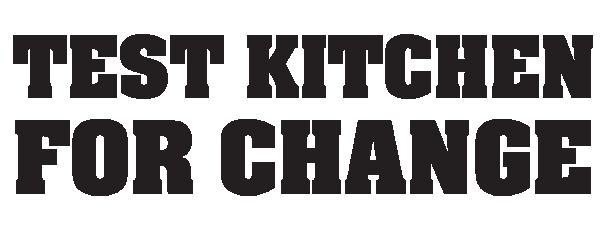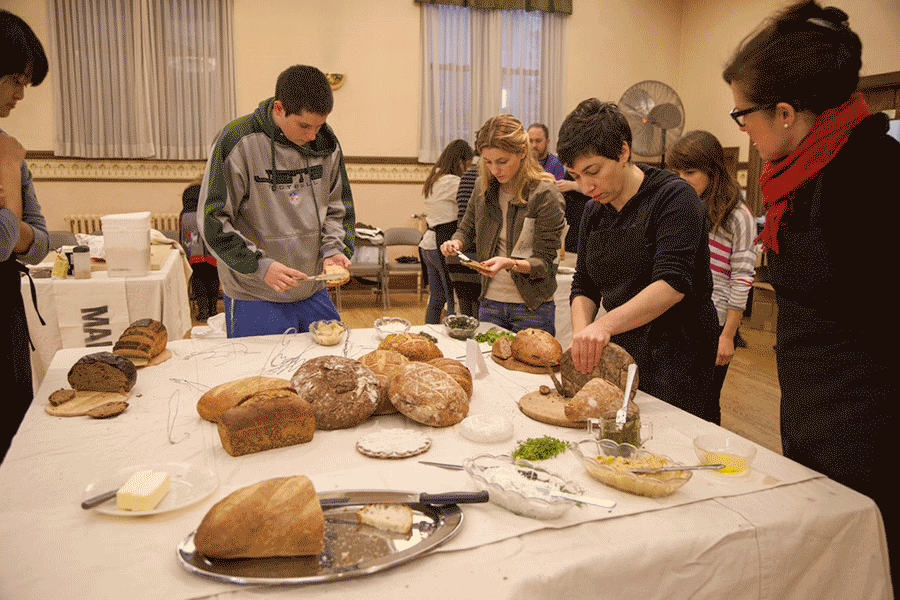
MFA show at the Mayerhoff gallery
Containers for spices and sourdough starter culture inspired by the shape of budding yeast molecules.
Fermented foods can last longer, taste better, and make us healthier. Natural slow fermentation makes foods more complex. Sourdough starter is a community of local yeast cultures captured from the air and is very different from the mono-culture commercial yeast made at the factory.
Yeast leavens the bread. People feed the yeast culture and share it, keeping it alive. Test Kitchen for Change distributes active sourdough starter for free.
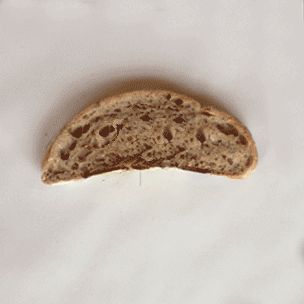
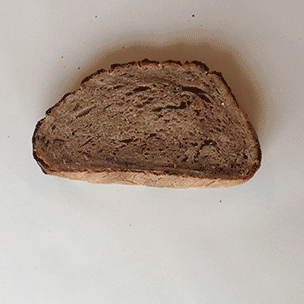


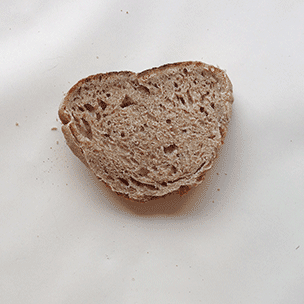
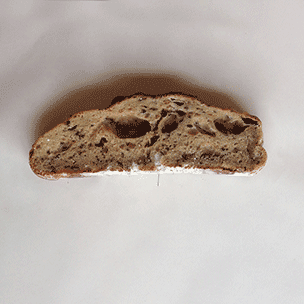
Display of the bread slices made by bread-making class participants.
Communal bread-making events conducted over the past six months helped to improve the bread-making class components, brought various people together, and elevated the appreciation for the quality of artisanal bread. Participants have met other people, tasted, smelled, touched, and made bread. Handling elastic dough is
a pleasant and meaningful experience. The fragrant loaves of bread are fruits
of your labor.
At the first bread-making event, we used a commercial kitchen to
mix 50+ loaves-worth-of-dough and engaged the participants to shape the loaves. Participants expressed the need to see the entire process, so the following event was advertised as “bring your mixing bowl” event. It was
a more successful and engaging experience.
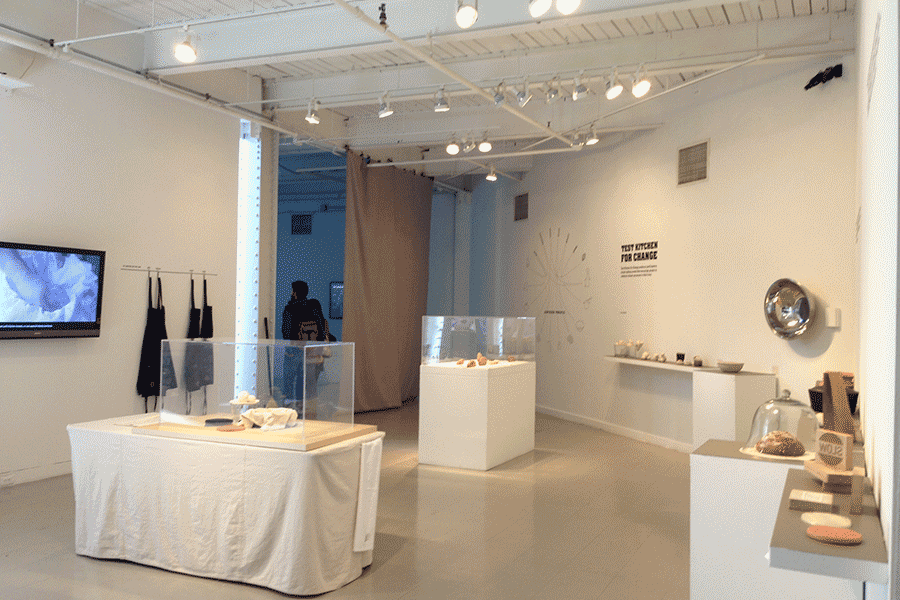
View of the exhibit
The symbol of the first bread-making event is a maze, inspired by the meditative labyrinth located in the Brown Memorial Church’s sanctuary.
Bread-making events in
the community are the most important part of Test Kitchen for Change’s approach. For each event, we designed a special emblem and applied it to
the event aprons. Event participants wore the aprons not only to protect their clothes, but as a prop for a role-playing in this new situations for them.
Hopefully, as we continue teaching bread-making,
our aprons will get covered by badges illustrating the history of our events.

Crit day with Abbott Miller
Traditionally, loaves are proofed in baskets, leaving the signature mark of the banneton on the crust. Bakers can slash the loaves just before baking to make a special design.
Experimenting with the marks left by the proofing baskets, I tried an array
of found and specially made objects to leave a mark on
a proofed loaf. Shown here are the results from a
range of bread-printing tools. An old ashtray is an example of an obsolete object (in our family), which has found a new use in a new ritual.
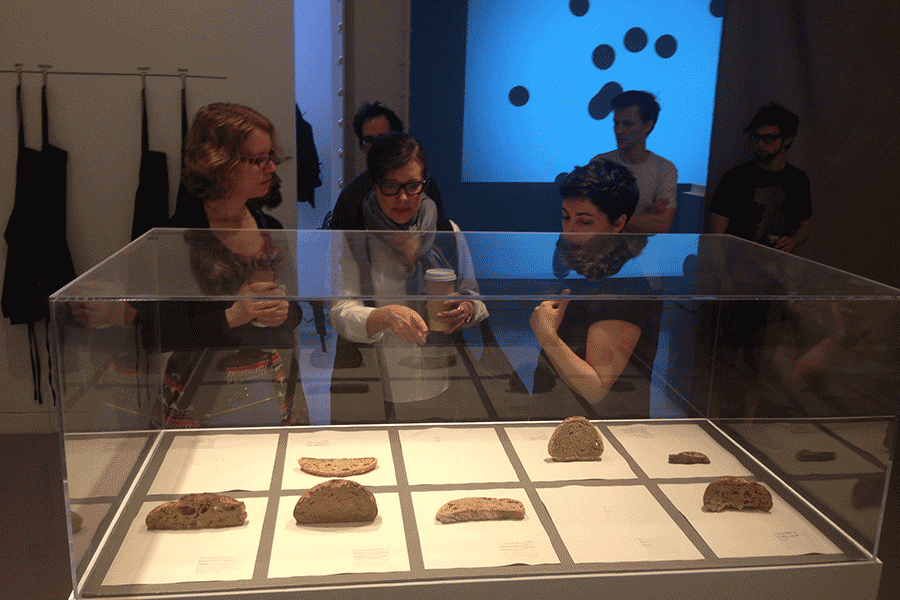
Communal Mixing Bowl
Communal bread-making events conducted over the past six months helped to improve the bread-making class components, brought various people together, and elevated the appreciation for the quality of artisanal bread. Participants have met other people, tasted, smelled, touched, and made bread. Handling elastic dough is
a pleasant and meaningful experience. The fragrant loaves of bread are fruits
of your labor.
At the first bread-making event, we used a commercial kitchen to
mix 50+ loaves-worth-of-dough and engaged the participants to shape the loaves. Participants expressed the need to see the entire process, so the following event was advertised as “bring your mixing bowl” event. It was
a more successful and engaging experience.
